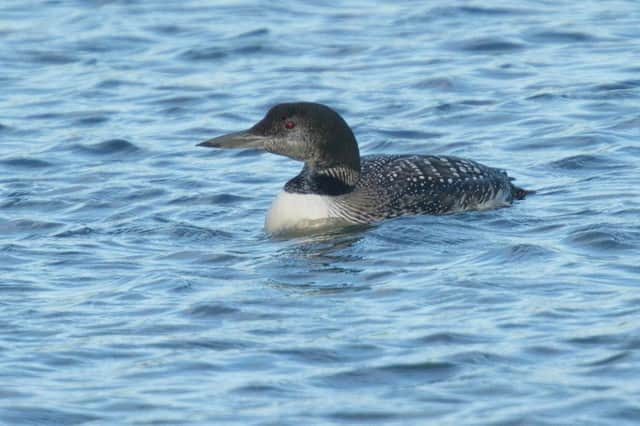Birdwatch: Influx of the great diving birds of film sound effetcs fame


Three diver species are regularly seen around our coasts; red and black-throated and the largest of the three, the great northern, which is mainly a winter visitor from Iceland and North America.
Up to three have been seen in Filey Bay, nine together in flight off Flamborough Head and others off Scarborough and Spurn.
Advertisement
Hide AdAdvertisement
Hide AdGreat northern divers have thick necks and large heads and beaks, and are powerful swimmers, diving frequently and for lengthy periods – one was recorded as having stayed underwater for three minutes.
In summer plumage they have a black and white barred collar and a fine chequered pattern on the back, while the head has a green gloss but in winter much of this is gone. Now the back is brown with paler brown edges to the feathers producing a wavy pattern while the throat, chin and cheeks are white, and the beak a metallic grey.
Around 300 pairs of great northern divers breed on Iceland and many more on ponds, rivers and lakes across North America and Canada.There the great northern diver is known as the common loon and in Canada the one dollar coin is known as a ‘loonie’ because there is an image of a great northern diver on it.
Film makers often use the sound of the great northern’s mating calls, sounding like wailing or hysterical laughter, as background sounds in films and on television where an atmosphere of tension, mystery or wildness is required.
Advertisement
Hide AdAdvertisement
Hide AdWhile stormy weather brings great northern divers much closer inshore than usual, it’s when they take refuge on the larger inland reservoirs, and lakes or in harbours that they are seen to their best advantage. A red-throated diver paid a brief visit to Scarborough Harbour this week.
Many will remember the young great northern diver first seen in the harbour in November 2013 and which remained there until February 2014 when it was unfortunately found dead.
Another, retaining much of its summer plumage, was inland at Lady Lakes, Mirfield, West Yorkshire for an amazing five months from December 2013.
Whooper swans have been moving south in large numbers along the Yorkshire coast, slightly later than usual. More pink-footed geese have also been noted and a black brant goose was seen at Spurn.
Advertisement
Hide AdAdvertisement
Hide AdUp to two black-necked grebes have been inside Scarborough Harbour and others in the South and Cayton bays. A black redstart has also been seen around the harbour buildings.
A male hen harrier came in to roost with 16 marsh harriers at the Blacktoft Sands reserve and a ringtail is still being seen.
The crag martin has continued to fly around the Crooked Spire church at Chesterfield this week, attracting large numbers of birders to see it. It is roosting at Chesterfield FC’s Proact Stadium.